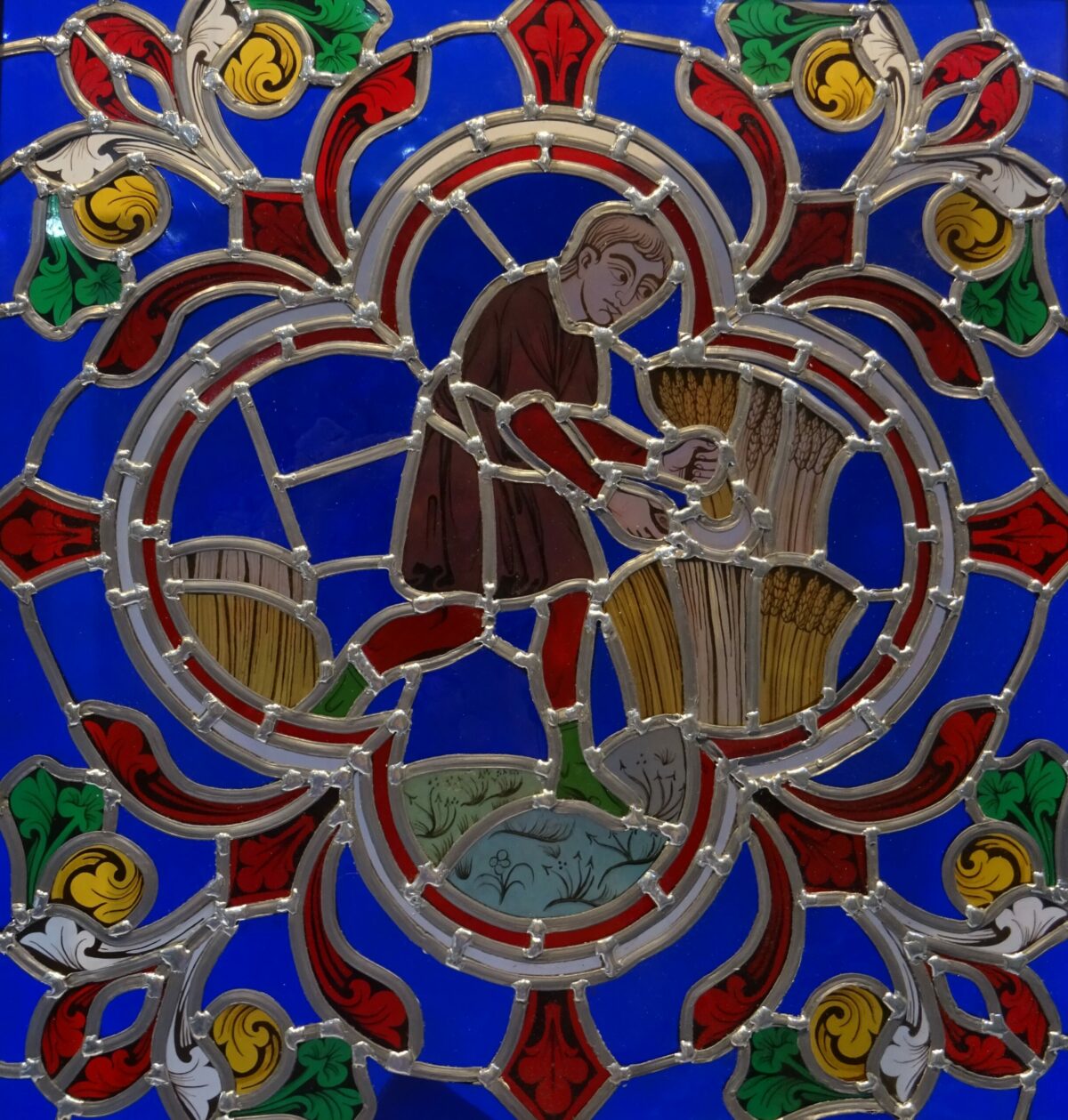“If the grain of wheat does not die, it stands alone; if it does die [it sprouts], it bears much fruit”.

« Le Moissonneur _ Le Cycle de la Vie» (The Harvester _ The Cycle of Life)
Detail taken from the west rose window of Notre Dame in Paris, where 48 medallions depict agricultural work. The scenes of the seed's death and rebirth are, of course, full of symbolic meaning.
Here, Leo, the sun sign of August, is paired with the harvester. With his sickle, the young man cuts the heavy, golden ears of wheat halfway down. The ears of gold held in the harvester's left hand are so many little suns embodied in a living material, the grain of wheat. It feeds whoever eats it, or becomes a new ear of corn in the next zodiacal cycle, which in turn bears offspring multiplied a hundredfold. This is the magic of life, the mystery of the seed, alive though seemingly dead.
It's harvest time. Each ear contains about a hundred grains of wheat. This is the stuff of parables, and Christ does not hesitate to use it: "Unless a grain of wheat dies, it remains alone; unless it dies, it bears much fruit". Such is the glorious and tragic fate of the lion. In order to bear fruit, he must die in order to pass on his experience and wealth. Otherwise, far from the wave of life, he will disappear, alone, isolated, forgotten.
Special research into glass painting by 13th century glass masters was required to create this panel.
The following are used
- Grisaille painting for the fine lines of the drapery on the clothes and the expression on the face,
- Washes to enhance shadows and add volume,
- Patina to give the stained glass an aged look.

